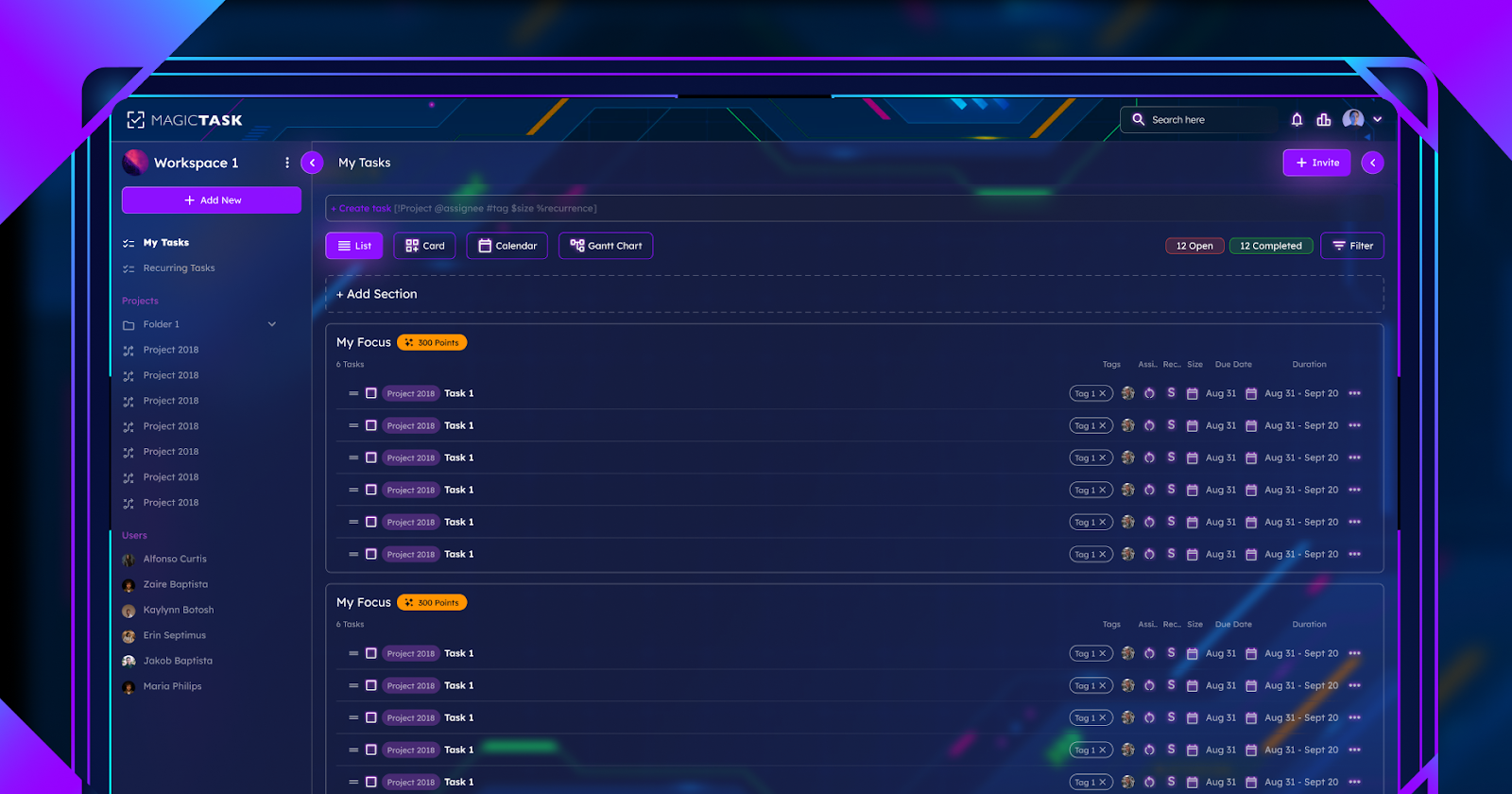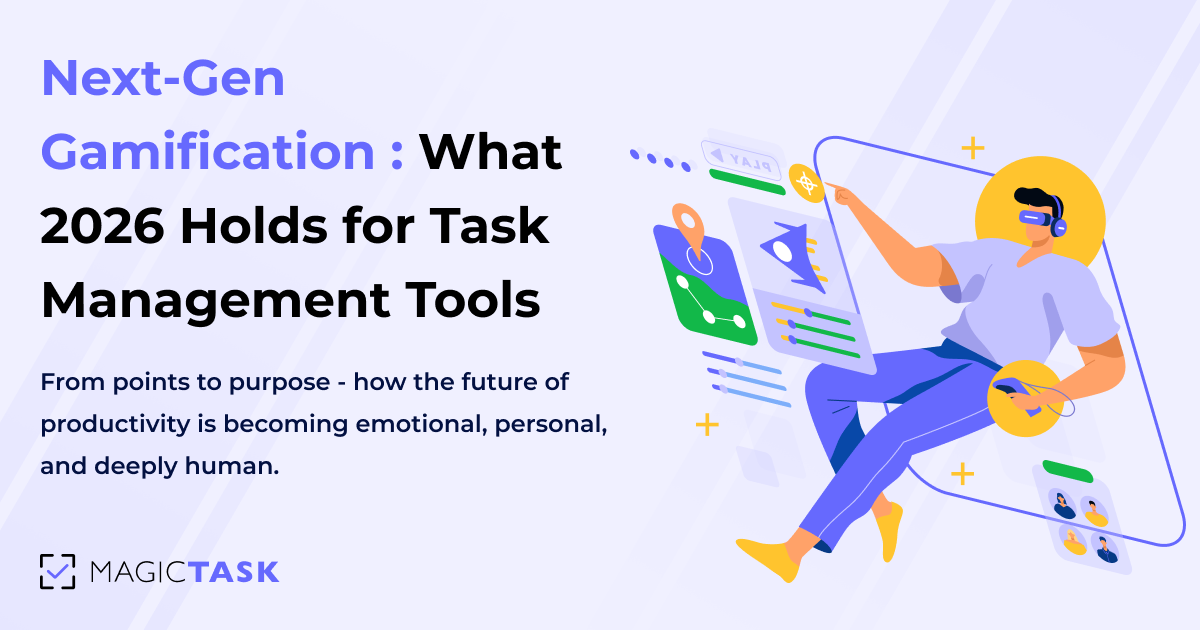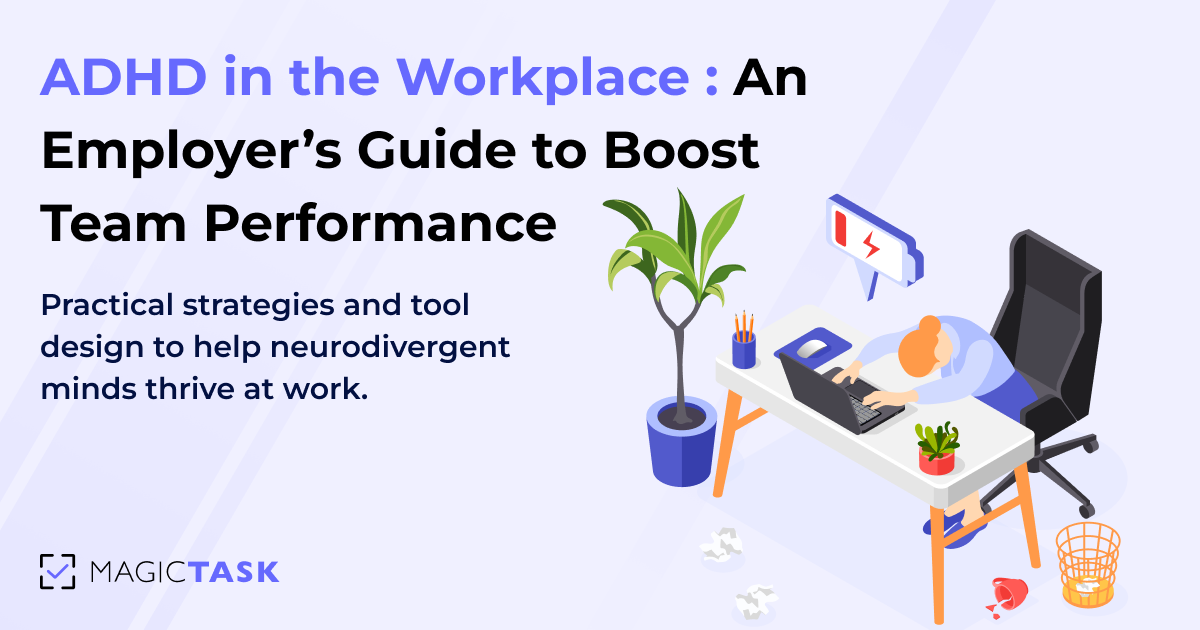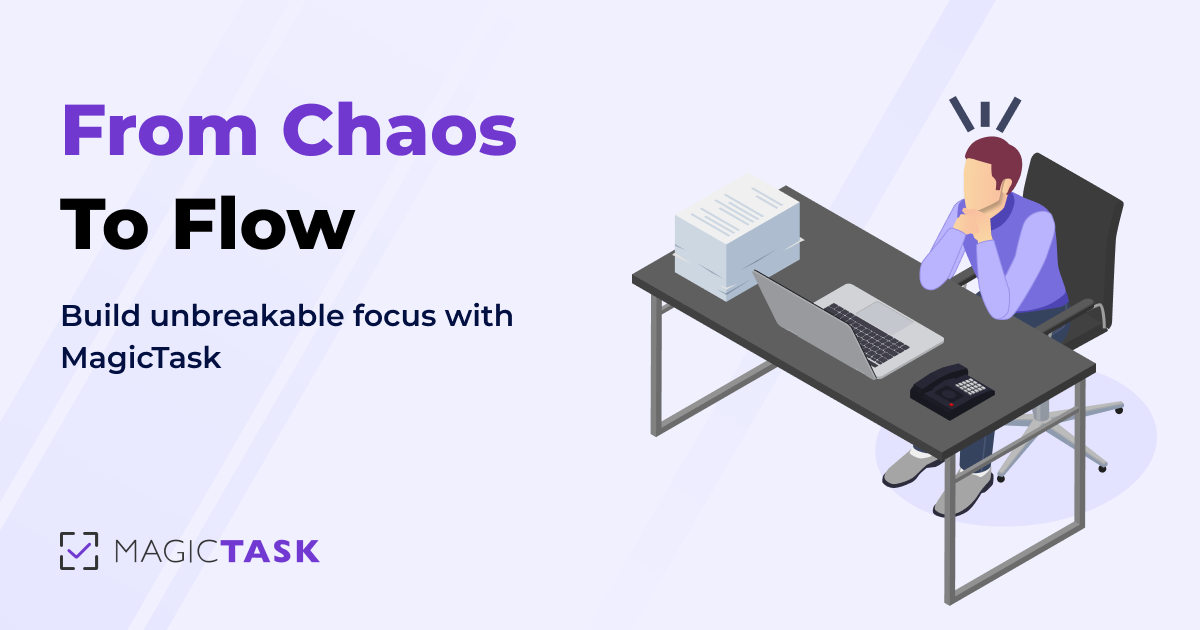9 Essential Goals to Boost Your Productivity in 2024

The benefits of productivity are well known. You get to finish projects faster, be happier, and feel less stressed.
The question of how to be productive is what many struggle with. How can you ensure that you’re spending your time wisely? What’s the best way to avoid distractions at work?
The secret is to set and maintain productivity goals. Working with objectives creates attention and urgency while giving you a sense of purpose. This article lists nine essential productivity goals that will make you more fruitful in your endeavors.
1. Define Clear and Measurable Goal
Goal-setting is an excellent first step in helping you achieve productivity.
However, you need to ensure that you’re creating specific and quantifiable goals. According to the goal-setting theory proposed by psychologists Gary Latham and Edwin Locke, setting specific goals can boost productivity by up to 25%.
Other studies show that the more precise you are with your goals, the higher the likelihood of achieving them. This raises the question: how do you set clear goals? Here are a few tips for effective goal setting:
- Define an objective - state the outcome you’d like to see by accomplishing the goal.
- Write down the goals - jotting them on paper provides a visual reminder.
- Set a timeline - create a deadline for achieving your goals. This way, you will have to take the necessary steps to accomplish the goal within the set timeframe.
- Choose measurable goals - this is necessary to track your progress. For instance, your goal could be to work undistracted for eight hours daily.
2. Prioritize Tasks and Responsibilities
Creating a to-do list is an excellent way to ensure you’re getting work done. But, it doesn’t necessarily help you achieve productivity. You could spend all your time and energy on non-essential tasks while deadlines for vital projects loom.
Enter task prioritization- it entails defining the order in which you will complete tasks. Prioritizing forces you to sort tasks based on their relevance so that you can work on them in the correct order.
Ultimately, this helps you spend your time, energy and other resources wisely. And the best part? There are several task prioritization techniques available, making this process a breeze. Examples include:
- Eat the Frog First: This approach requires you to identify and tackle the hardest task first before everything else.
- The ABCDE method involves rating tasks based on their significance level. A represents the most vital tasks (accorded top priority), while E represents the least important.
- Eisenhower Matrix - this method requires you to classify tasks into four groups as follows:
-
- Urgent and important - these are the tasks you should prioritize.
- Urgent but not important - feel free to delegate these tasks to teammates.
- Not Urgent and not important - these tasks shouldn’t be on your to-do list to begin with.
- Important but not urgent - these tasks can be scheduled for later.
3. Enhance Time Management Skills
Many are aware of the importance of managing their time effectively. Yet statistics show that 82% of individuals don’t have a distinct time management strategy. If you fall under this category, consider adopting one. This will ensure that you’re spending time on the most crucial tasks, thus, maximizing your productivity.
Time management goes hand in hand with task prioritization. After creating the order of completing tasks, allocate time for each one. Here are three time management techniques that might come in handy:
- Time Boxing involves assigning time intervals to tasks. This approach requires ample discipline, as you must stay within the predetermined timeframe. Essentially, you cannot continue with the task once the duration elapses, even if it’s incomplete. The intervals can range from a couple of minutes to several months.
- Time Blocking entails dividing your work week or day into specific time slots. Then, you assign a time block to each task.
- Pomodoro: With this approach, you spend 25 minutes on a specific task and then take a 5-minute break. Repeat this cycle four times before taking a longer 15- to 30-minute break.

4. Develop a Routine for Success
For some, the word routine conjures up images of monotonous, boring tasks. However, routines don’t have to be dull. More importantly, they’re among the most powerful tools for achieving productivity.
Studies show that following a routine boosts one’s cognitive ability. Cognitive ability constitutes memory formation, concentration and reasoning.
That nap you take every afternoon might seem trivial. But this short period is what gives your body time to relax and rejuvenate. This way, you can focus better on the afternoon tasks. Here are a few more habits you should incorporate into your routine for optimal productivity:
- Start your day with a morning routine
- Schedule breaks
- Adopt healthy habits: healthy meals, getting sufficient sleep, exercising regularly
- Break down projects into smaller, manageable tasks
5. Embrace Continuous Learning
Investing in continuous learning is another productivity goal that should be at the top of your list. This means being deliberate about expanding your knowledge and skill set.
The beauty of this is that you can choose the learning mode that suits you best. This could involve taking a formal course, informal learning, attending a training program, or shadowing your colleagues.
“What do I stand to gain?” For one, this helps you hone your current skills and retain crucial knowledge related to your profession. This, in turn, enhances your work performance and productivity.
Secondly, it makes you more adaptable. We live in a fast-paced world where market conditions, regulations and technologies change on a whim. Ongoing learning helps you keep abreast of the latest trends. Thanks to this, you can adapt easily and remain competitive in your field.
6. Implement a Digital Detox
Did you know that the average American looks at their phone a whopping 96 times? Furthermore, those aged between 18 and 24 years glance at their cell phones twice as much!
With such statistics, it’s clear that we have become overly dependent on our mobile gadgets. This higher dependency decreases focus, increases stress and lowers productivity.
Digital detox has emerged as an effective means of curbing the addictive nature of tech devices. This doesn’t necessarily mean you ditch technology altogether (although you can if you want to). Rather, it means striking a healthy balance between technology use and productive activities.
Unplugging helps your body and mind to reset. This way, you can resume work more energized, boosting productivity. Here are a few tips for a digital detox:
- Downgrade your phone - buying a phone that supports fewer apps makes it easier to unplug.
- Schedule time away from technology - if you use tech gadgets for your work, schedule time away from screens.
- Create zero-tech zones - ban phone use from your bedroom, dining area and more.
7. Improve Physical and Mental Well-being
If you’re like most employees, you’re always juggling between work and familial obligations. This forces you to put physical and mental well-being on the back burner.
But as research shows, improving productivity means prioritising overall health. In fact, this study involving call centre respondents found that a 1-point increase in happiness led to a 12% productivity boost. Here are a few ideas to help you stay physically and mentally healthy:
- Make time for physical activity - exercising not only boosts your energy but also increases blood circulation to the brain. This sharpens your focus and alertness, which translates to better work performance and productivity.
- Follow a healthy diet - whether eating a snack or a full-blown meal, look for nutritious options.
- Get a good night’s sleep - aim for 7 to 9 hours of uninterrupted sleep. Creating an evening routine can help you achieve this more easily.
8. Foster a Productive Work Environment
Access to technology, effective communication channels and workplace culture are examples of factors that affect your productivity.
But did you know that your work environment has just as much impact? That’s right, this setting can make or break your productivity. Whether you work remotely or in a traditional workspace, pay attention to these factors if you want to be more productive:
Reduce noise levels
Do you prefer to work in complete silence? Or, would you rather play a bit of music in the background? If it’s the latter, stick to manageable noise levels to minimize distractions.
Leverage natural lighting
Poor lighting can lead to eye fatigue, lower concentration and sometimes cause headaches. Consider working in a well-lit area and leveraging natural light whenever possible.
Consider ergonomic office furniture
Contrary to popular belief, ergonomic furniture is not some fancy equipment reserved for the affluent. Rather, it’s a fundamental requirement for every office worker. This furniture supports your natural curvature as you work, increasing your comfort and productivity in the process.
9. Set Up Accountability Systems
Do you struggle to commit to your personal goals? If you do, setting up an accountability system might help.
The easiest way to do this is to share your goals with someone you trust. This individual will check in regularly to ensure you stick to your objectives. That said, you’ll need to find a cheerleader in your life. The kind who supports you, not one who constantly makes you doubt yourself.
If finding a trustworthy individual is challenging, technology offers a great alternative. Task management apps like MagicTask can help you track your tasks and goals, ensuring you stay on course even without a personal cheerleader.

Final Thoughts
Increasing your productivity in 2024 is easier than you think. You just have to take the first step of setting productivity goals. With consistency and determination, you will find yourself being more productive than you were.
Examples of these goals are creating a productive work environment, setting up a routine, and adopting a time-management technique. Similarly, embrace continuous learning and prioritize your physical and mental well-being.




